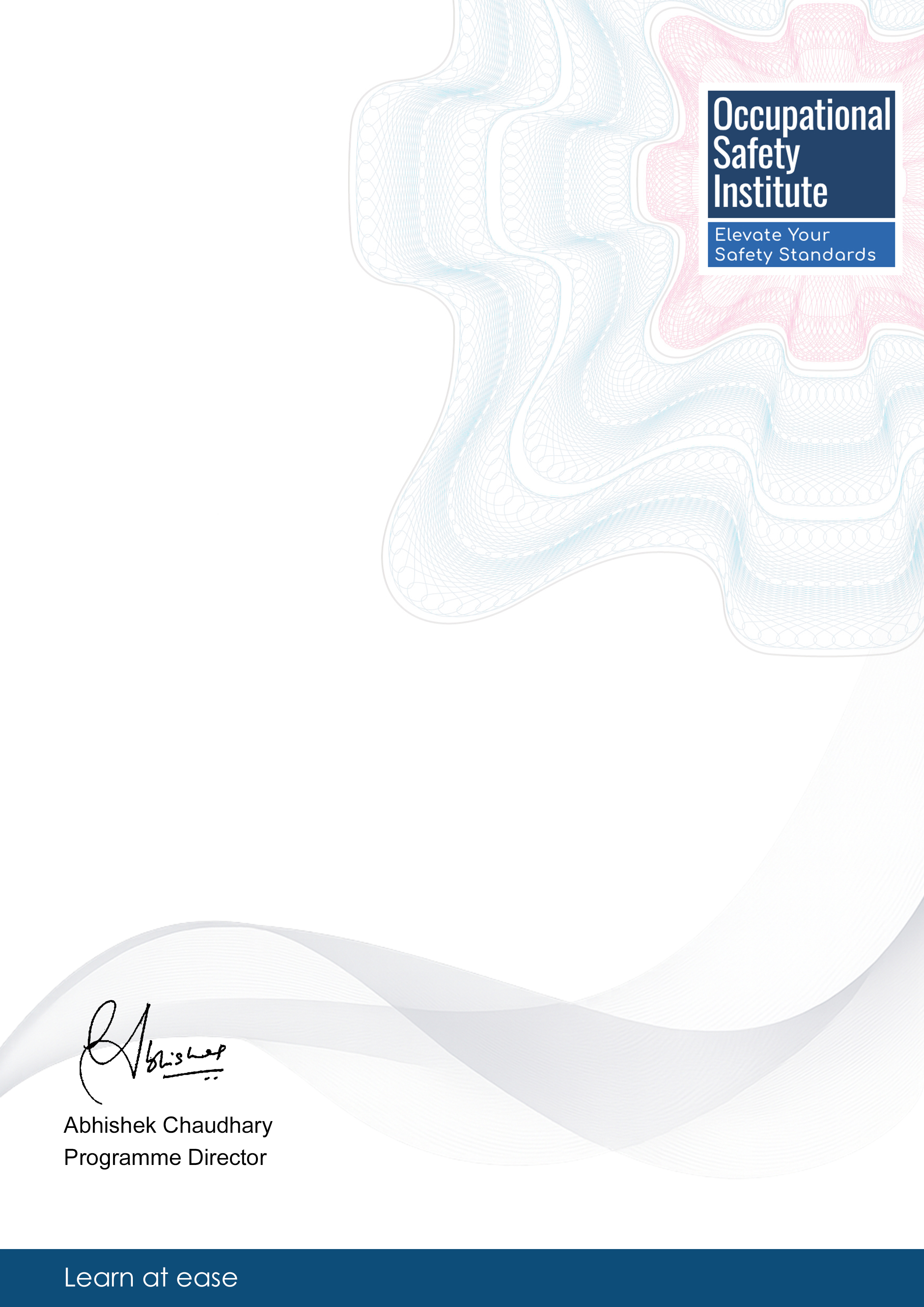Module 1: Introduction to Circadian Rhythms
Explore the fundamentals of Circadian Rhythms and their influence on human health and safety.
This course delves into the crucial role of Circadian Rhythm in maintaining workplace safety. It is ideal for safety professionals, HR managers, and anyone interested in optimizing safety practices. The unique focus on biological rhythms sets this course apart, offering participants practical insights and strategies to enhance safety measures in various industries.
4.4/5
|96 reviews
|418 students enrolled
Comprehensive, industry-recognized certification that enhances your professional credentials
Self-paced online learning with 24/7 access to course materials for maximum flexibility
Practical knowledge and skills that can be immediately applied in your workplace
Explore the fundamentals of Circadian Rhythms and their influence on human health and safety.
Examine the implications of work schedules on Circadian Rhythms and safety outcomes.
Learn about fatigue risks in the workplace and best practices for fatigue management.
Discover ways to optimize work schedules and practices based on Circadian Rhythm science.
Analyze real-world case studies and apply Circadian Rhythm principles to practical workplace scenarios.
This programme includes comprehensive study materials designed to support your learning journey and offers maximum flexibility, allowing you to study at your own pace and at a time that suits you best.
You will have access to online podcasts with expert audio commentary.
In addition, you'll benefit from student support via automatic live chat.
Assessments for the programme are conducted online through multiple-choice questions that are carefully designed to evaluate your understanding of the course content.
These assessments are time-bound, encouraging learners to think critically and manage their time effectively while demonstrating their knowledge in a structured and efficient manner.
The field of Occupational Health and Safety offers diverse career opportunities with a growing demand for professionals skilled in Circadian Rhythm regulation. Graduates can pursue roles in safety management, health promotion, and consultancy services.
Career progression in this field often leads to senior management positions, specialized consultancy roles, and opportunities to influence organizational safety policies. Continuous professional development is key to staying updated with industry trends and regulations.
Responsible for developing and implementing safety policies and programs to ensure a safe work environment.
Provides expert advice and guidance on safety practices to organizations across various industries.
Focuses on promoting health and preventing occupational illnesses through risk assessments and wellness programs.
In addition to job roles, professionals in this field benefit from networking opportunities at safety conferences, the option to pursue advanced safety certifications, further education paths in health sciences, and industry recognition for expertise in workplace safety.
Safety Manager
"I learned how to align work schedules with Circadian Rhythms to enhance safety measures effectively in our diverse workforce."
HR Specialist
"Implementing fatigue management techniques from this course has significantly reduced workplace incidents and improved productivity."
Shift Supervisor
"Designing shift work arrangements based on Circadian Rhythm science has transformed our safety protocols and employee well-being."
Occupational Health Officer
"The course provided me with valuable interventions to reduce accidents and promote well-being by regulating Circadian Rhythms in the workplace."
Upon successful completion of this course, you will receive a certificate similar to the one shown below:

Postgraduate Certificate Circadian Rhythm Regulation in Workplace Safety
is awarded to
Student Name
Awarded: December 2025
Blockchain ID: 111111111111-eeeeee-2ddddddd-00000
No specific prior qualifications are required. However, basic literacy and numeracy skills are essential for successful completion of the course.
The course is self-paced and flexible. Most learners complete it within 1 to 2 months by dedicating 4 to 6 hours per week.
This course is not accredited by a recognised awarding body and is not regulated by an official institution. It is designed for personal and professional development and is not intended to replace or serve as an equivalent to a formal degree or diploma.
This fully online programme includes comprehensive study materials and a range of support options to enhance your learning experience: - Online quizzes (multiple choice questions) - Audio podcasts (expert commentary) - Live student support via chat The course offers maximum flexibility, allowing you to study at your own pace, on your own schedule.
Yes, the course is delivered entirely online with 24/7 access to learning materials. You can study at your convenience from any device with an internet connection.
Occupational Health and Safety Management Leadership Development
This course focuses on developing leadership skills in occu…
Occupational Health in Data Science Workplaces
This course focuses on integrating health measures in data …
Health and Safety Metrics and Analytics in Business Intelligence
This course explores Health and Safety Metrics and Analytic…
Effective New Account Access in Health and Safety Training
This course equips health and safety professionals with ski…
Disclaimer: This certificate is not intended to replace or serve as an equivalent to obtaining a formal degree or diploma. This programme is structured for professional enrichment and is offered independently of any formal accreditation framework.